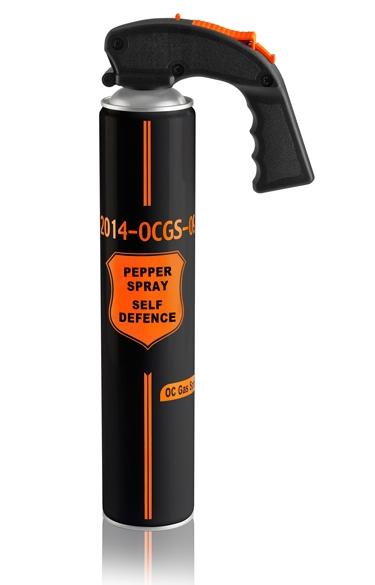Table of Contents
- Latest International Regulations Shaping Pepper Spray Usage
- Analyzing Compliance Challenges and Enforcement Mechanisms
- Impact of Recent Treaty Amendments on Law Enforcement Protocols
- Strategic Recommendations for Policy Makers and Security Agencies
- Future Outlook
Latest International Regulations Shaping Pepper Spray Usage
Across the globe, regulatory frameworks concerning the manufacture, distribution, and deployment of pepper spray are evolving rapidly. Nations are increasingly prioritizing public safety while balancing the rights of citizens to self-defense. Recent international agreements emphasize stringent controls on the concentration of active ingredients, mandatory registration of products, and explicit limitations on usage by law enforcement personnel and civilians. For example, several countries now enforce mandatory training programs to ensure responsible handling, recognizing the potential for misuse and adverse health effects.
Key regulatory elements gaining prominence include:
- Standardization of chemical compositions to avoid harmful adulterants.
- Clear labeling and packaging requirements to ensure consumer awareness.
- Restrictions on export and import aligned with international security protocols.
- Defined legal consequences for unauthorized possession or disproportionate use.
These measures collectively reflect a growing trend toward harmonizing national laws to accommodate technological developments and humanitarian considerations, ultimately fostering safer community environments worldwide.
Analyzing Compliance Challenges and Enforcement Mechanisms
With the increasing adoption of new international treaties regulating the use of pepper spray, one of the foremost challenges lies in ensuring consistent compliance across diverse legal systems. Nations vary widely in their existing domestic frameworks, enforcement capacities, and cultural attitudes toward non-lethal weapons, which complicates uniform application. Moreover, gaps in training law enforcement and security personnel on updated guidelines often lead to unintentional breaches. Addressing these issues requires a multi-layered approach including:
- Enhanced cross-border information sharing and best practices dissemination
- Targeted capacity-building programs tailored to local conditions
- Clearer definitions within treaty texts to minimize interpretative ambiguities
- Collaboration with civil society to foster transparency and accountability
Enforcement mechanisms are equally pivotal, especially when compliance is voluntary or semi-mandatory. Recent treaty revisions advocate for the integration of independent monitoring bodies and periodic compliance audits that operate with transparent criteria. In addition, leveraging technology such as body cameras and real-time reporting platforms can serve as effective deterrents against misuse. While sanctions and diplomatic pressures remain tools of last resort, the emphasis increasingly shifts towards preventative measures and dispute resolution frameworks that maintain diplomatic goodwill without compromising human rights safeguards.
Impact of Recent Treaty Amendments on Law Enforcement Protocols
Recent amendments to international treaties concerning the regulation of pepper spray have introduced significant changes to law enforcement protocols worldwide. These updates emphasize a stringent framework designed to balance effective policing with human rights considerations, ensuring that the use of pepper spray is judicious, proportional, and accountable. Agencies are now mandated to implement detailed documentation processes for each instance of deployment, including timestamped incident reports, medical assessments, and witness statements. This level of accountability serves both to protect civilians and to support law enforcement officers in maintaining transparency throughout their operations.
Moreover, training programs have been enhanced to incorporate these treaty requirements, focusing heavily on de-escalation techniques and alternative non-lethal options before pepper spray is authorized. Key protocol shifts include:
- Mandatory scenario-based training to better prepare officers for complex engagements involving pepper spray use.
- Age and vulnerability restrictions explicitly outlined for protected groups such as minors and individuals with respiratory health issues.
- Regular audits and external oversight to ensure compliance with international standards and to minimize misuse.
Strategic Recommendations for Policy Makers and Security Agencies
To ensure responsible and effective regulation of pepper spray use, policy makers and security agencies should prioritize the adoption of clear, standardized protocols that align with international human rights frameworks. This includes defining specific scenarios under which pepper spray deployment is permissible and mandatory reporting procedures to maintain transparency and accountability. Emphasizing comprehensive training programs for law enforcement personnel can significantly reduce misuse and foster public trust by promoting judicious application and compliance with evolving international standards.
Moreover, integrating technological advancements and data analytics into monitoring practices can enhance oversight and response strategies. Agencies should consider:
- Implementing body-worn cameras to document all instances of pepper spray use.
- Establishing independent review boards for evaluating compliance and incidents.
- Collaborating with global partners to share best practices and update guidelines regularly.
By embracing these multifaceted approaches, stakeholders can strike a balance between effective law enforcement and safeguarding civil liberties in accordance with the latest treaty developments.
Future Outlook
As international dialogue continues to evolve around the regulation and ethical use of pepper spray, staying informed about the latest treaty developments is crucial for policymakers, law enforcement agencies, and civil rights advocates alike. These updates reflect a broad commitment to balancing public safety with human rights considerations, highlighting the importance of clear guidelines and accountability measures on a global scale. By monitoring these shifts, stakeholders can better navigate the complex legal landscape and contribute to more effective and humane applications of pepper spray worldwide. Stay tuned for more insights as this dynamic area of international law continues to unfold.Check Our Other Blogs
- StunGun – Your Trusted Source for Stun Guns, Laws, and Self-Defense Tips
- PepperSprayLaws – Your Trusted Resource for Pepper Spray Information
- StunGunLaws – Your Trusted Guide to Stun Gun Legality and Safety




